Why the Chinese military is only a paper dragon
Corruption, bad neighbors, inflation, and a demographic time bomb — these are just a few of Beijing's woes


In appearance it is very powerful, but in reality it is nothing to be afraid of — it is a paper tiger. — Mao Zedong on the United States, 1956
China's rise over the past 30 years has been nothing short of spectacular.
After decades of double-digit growth, today China is the world's second largest economy — and possesses an increasingly sophisticated military that's among the planet's most powerful. Despite China bordering a number of unstable countries, its borders are secure.
The Week
Escape your echo chamber. Get the facts behind the news, plus analysis from multiple perspectives.

Sign up for The Week's Free Newsletters
From our morning news briefing to a weekly Good News Newsletter, get the best of The Week delivered directly to your inbox.
From our morning news briefing to a weekly Good News Newsletter, get the best of The Week delivered directly to your inbox.
That wasn't always the case. In 2,000 years, China has suffered invasions, revolutions, and humiliations from the outside world — plus its own internal rebellions. It has been brutalized, conquered, and colonized.
No longer. China's defense spending has increased tenfold in 25 years. Beijing is building a powerful blue-water navy, developing stealth fighters, and carefully experimenting with peacekeeping and expeditionary operations.
China's military buildup, along with an aggressive foreign policy, has inspired a fair amount of alarm in the West. Some American policymakers consider Beijing to be Washington's only "near-peer competitor" — in other words, the only country with the military might to actually beat the U.S. military in certain circumstances.
But they're wrong. Even after decades of expensive rearmament, China is a paper dragon — a version of what Mao Zedong wrongly claimed the United States was … in 1956.
A free daily email with the biggest news stories of the day – and the best features from TheWeek.com
China's military budget has grown by double-digits year after year, but inflation has eaten away at the increases. China's army, navy, air force, and missile command are wracked by corruption — and their weapons are, by and large, still greatly inferior to Western equivalents.
Yes, the People's Liberation Army is slowly becoming more technologically advanced. But that doesn't mean Beijing can mobilize its armed forces for global missions. Unlike the world's main expeditionary powers — the United States and the U.K., to name two — China is surrounded by potential enemies.
Russia, Japan, and India are all neighbors … and historic adversaries. China's aggressive foreign policy targeting smaller states isn't encouraging submission but resistance, as countries such as The Philippines and Vietnam ally with the United States, Japan, and India.
China's other neighbors are weak or failed states, such as Pakistan and North Korea. Their instability — or their outright collapse — could have serious security repercussions for China, and help explain why Beijing lavishes funds on its armed forces.
Order of battle
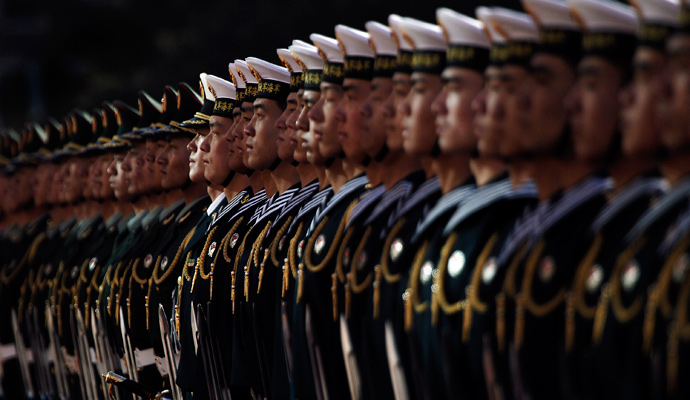
China has the world's largest military, with no fewer than 2.3 million men and women in uniform. Another 800,000 people serve in China's reserves and militias.
The PLA ground forces number 1.25 million men and women divided into 18 group armies, each similar to an American corps. Each army consists of three to five infantry and mechanized divisions — China has only one tank division.
These ground troops are mostly for homeland defense. For power projection outside its borders, China has three airborne divisions, two marine divisions, and three marine brigades. Major equipment includes more than 7,000 tanks and 8,000 artillery pieces.
China's navy commands 255,000 sailors and 10,000 marines. The People's Liberation Army Navy is divided into the North, East, and South Seas Fleets, together possessing one aircraft carrier, 23 destroyers, 52 frigates, 49 diesel attack submarines, and five nuclear attack subs. China has at least three Jin-class ballistic missile submarines, representing Beijing's nuclear deterrent at sea.
The People's Liberation Army Air Force has 330,000 active personnel spread out over 150 air and naval aviation bases. The PLAAF and naval air arm of the PLAN together possess 1,321 fighter and attack aircraft — including hundreds of J-7s, pictured — plus 134 heavy bombers and tankers and 20 airborne early warning planes. China also operates more than 700 combat helicopters.
Unique to the PLA is the Second Artillery Corps, a separate branch of the military in charge of land-based conventional and nuclear missiles. The Second Artillery includes between 90,000 and 120,000 personnel divided into six missiles brigades.
The Second Artillery fields more than 1,100 conventional short-range ballistic missiles with ranges of 1,000 kilometers or less, another 300 or so conventional medium-range ballistic missiles, and an estimated 120 long-range nuclear ballistic missiles.
The Stockholm International Peace Research Institute estimated China's 2013 defense budget at $188 billion dollars. That's about nine percent of global military spending and just under half of all spending in Asia. The same year, the United States spent $640 billion on defense, Russia $88 billion, India $47 billion, and Japan $48 billion.
Yes, China's spending seems like a lot. But it's not, really — especially considering how dangerous China's corner of the world can be.
Unenviable position
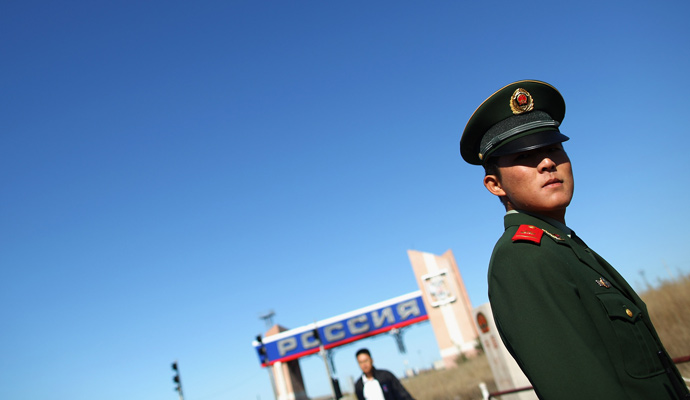
It's probably difficult to walk through Beijing's most prosperous neighborhoods or Shanghai's glittering streets and grasp that you are in a country that borders three of the most unstable places in the world — Pakistan, Afghanistan, and North Korea.
After thousands of years of incursions and invasions, China has finally built up strong borders. Beijing is doing a good job of maintaining peace and relative prosperity in a rough, impoverished neighborhood.
"China's land borders have never been more secure than they are today," M. Taylor Fravel, an associate professor of political science at the Massachusetts Institute of Technology, told War is Boring.
"Although disputes with Bhutan and India remain, China no longer faces the prospect of a significant threat on land," Fravel continued. "Clashes could occur on the border with India, but they would be contained by geography and unlikely to escalate into a wider war."
This hasn't always been the case. Invaded by the Mongols, the Russians, Western colonialists, and most recently Japan, China suffered greatly at the hands of outsiders for millennia. Given this history, it makes sense that Beijing would want strong defenses.
Vietnam fought China in 1979 and killed 9,000 People's Liberation Army troops in a single month. Japan's occupation of China in the 1930s and '40s killed millions of Chinese. India fought China as recently as 1962. China and Russia waged a short, undeclared war in 1969.
China borders 14 countries, tying Russia for the most neighbors. But while many of Russia's neighbors are peaceful — Estonia, Finland, Norway, and Latvia come to mind — China borders Afghanistan, North Korea, Myanmar, and Pakistan. Two of these states have nuclear weapons.
North Korea is particularly dangerous. Not only does it practice diplomacy through spontaneous violence, it has nukes. Nobody knows when — or if — the North Korean government will collapse, but the idea of 24 million starving people suddenly finding themselves without a government is a frightening one for Beijing.
Last year we found out China has contingency plans to deal with a post-collapse North Korea. That would likely involve the PLA moving into North Korea to set up a buffer zone. Perhaps in reaction to this disclosure, Pyongyang described Beijing as a "turncoat and an enemy."
China is experiencing a prolonged period of peace and prosperity unprecedented in its modern history. At the same time, its neighborhood headaches are as numerous as ever. That's one good reason China's military budget is $188 billion a year and rising.
All alone
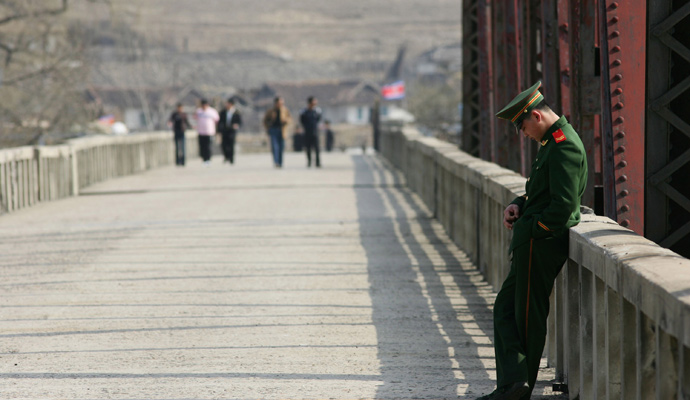
At the same time, China is remarkably lacking in real, dependable allies. In the Pacific alone, the United States can count Japan, Taiwan, Australia, South Korea, New Zealand, and The Philippines as close allies — and maintains cordial relations with others including Malaysia, Vietnam, and Indonesia.
China's list of allies in the Pacific, on the other hand, is a short one. Russia. Globally, China's allies include Pakistan, Zimbabwe, Venezuela, and the countries of the Shanghai Cooperation Organization — Pakistan, Kazakhstan, Kyrgyzstan, Tajikistan, and Uzbekistan. All are despotic or near-despotic states, many are unstable and many have long records of human rights abuses.
Beijing embraces its worst neighbors in part to keep them in check. This worked with Pakistan, but failed with North Korea. In Myanmar, China cozied up with the oppressive military regime only for it to suddenly open up and seek ties with the West and Japan. China's net gain was years of condemnation for supporting the junta — which is to say, a net loss.
Where China has really failed, however, is in simply getting along with nearby countries. Before the recent confrontation with The Philippines over the Ayungin Shoal, relations between Manila and Beijing had never been better. The same went for much of Southeast Asia before China declared sovereignty over 90 percent of the South China Sea.
Even relations with Japan, China's historical enemy, were cordial if staid.
Sometime around 2010, Beijing decided to stop playing nice. China began pushing long-dormant territorial claims — and tried its hardest to split the alliance between Japan and the U.S. China's relations with pretty much every country in East and Southeast Asia have chilled.
It's hard to say what China really hoped to gain. Some argue that China is attempting to "Finlandize" smaller Asian states — that is, intimidate them into expressing neutrality in order to deny them to the Americans. Others argue that China wanted those disputed territories but also fundamentally has a problem with treating other countries as equals.
Whatever the case, China's recent actions have left it largely friendless. Today its most important relationships with other countries are strictly economic in nature.
This has obvious implications for China's military posture. While the U.S. Navy can sail across the Pacific and call on practically dozens of ports, China's warships can sail just outside its territorial waters and, other than the Russian port of Vladivostok, have nowhere to go.
This places China at an enormous strategic disadvantage. Beijing has no allies to provide bases, share burdens, pool intelligence, or lend moral support.
Race with inflation

Since 1990, China's defense spending has swelled by at least 10 percent annually, resulting in a tenfold overall budget increase in just 24 years. Some observers point to China's seemingly huge military outlays as evidence of sinister intent.
But the budget boosts aren't nearly as big as they seem.
China's economic growth over the past two and a half decades has been meteoric, and has allowed the country to spend more on a modern military. But as a proportion of its economy, China's defense budget is in line with international norms.
And if you take into account inflation, China's real increase in defense spending is actually in the single digits annually — hardly the massive influx of cash that alarmists decry.
It's important to view China's arms spending in historical context. A quarter-century ago, Beijing's military was big and low-tech. In 1989, the PLA had 3.9 million people on its payroll — many of them leg infantry lacking vehicles and sophisticated weaponry. The army's main tank was a version of the Soviet T-55, a design dating to the early 1950s.
The air force and navy were capable only of coastal defense. China had a single nuclear missile submarine, which was rumored to have caught fire and sunk in port.
China was a poor country. Its GDP was $451 billion. By comparison, the USA's GDP in 1989 was $8.84 trillion. That year, Beijing spent $18.33 billion on defense. By comparison, the same year Japan spent $46.5 billion and tiny New Zealand, $1.8 billion.
China's 1989 defense budget amounted to spending $4,615 per soldier. At the same time, the United States appropriated $246,000 per individual service member.
In the late '80s, China's military doctrine still emphasized "People's War," a defensive strategy for drawing an enemy deep into the Chinese interior and then destroying him with conventional and guerrilla warfare. It was based on China's wartime experiences … and was totally inadequate.
In 1991, Beijing watched in shock and horror as a U.S.-led coalition easily smashed Saddam Hussein's Iraqi army and ejected it from Kuwait. An air campaign lasting several weeks and a ground offensive just 100 hours in duration destroyed a numerically superior Iraqi force.
Suddenly, China's large, impoverished military looked like a liability.
Beijing had a lot of work to do reforming its armed forces. That required money. The good news for China was that, thanks to a booming economy, it actually didn't have to devote a larger share of national output to defense in order to invest more in competent troops and modern weaponry.
One way to look at defense spending is as a percentage of GDP. China's major neighbors, with the exception of Japan, allocate more to their militaries as a percentage of their respective GDPs. India allocates 2.5 percent, South Korea 2.8 percent, and Russia 4.1 percent. The United States, with the best-equipped military on the planet, spends 3.8 percent of its GDP on defense.
The paradox of China's military budget is that spending has risen even as defense's share of the economy has dropped. As a percentage of the economy, China's arms spending has actually fallen by a little more than 20 percent. Beijing spent 2.6 percent of GDP on defense in 1989. Between 2002 and 2010, it appropriated an average of 2.1 percent. In 2013, China's military budget accounted for just two percent of GDP.
The PLA's slice of the economic pie has gotten smaller. It's just that the pie itself is much, much bigger than it was 25 years ago.
Public security
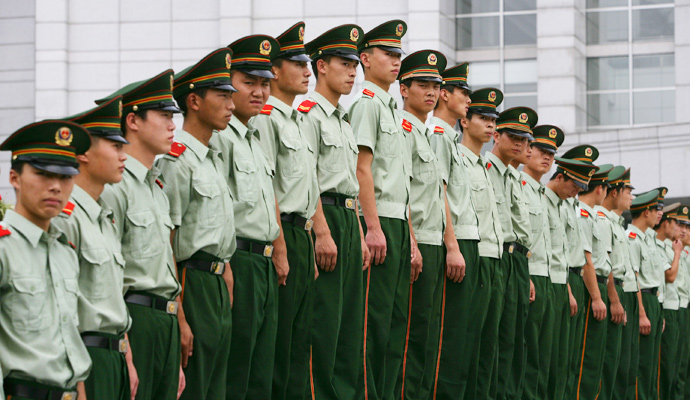
By some calculations, in 2013 China spent more on "public security" — Internet censorship, law enforcement, and the paramilitary People's Armed Police — than it did on external defense. China's internal security budget for 2014 is a secret, leading to speculation that once again, the Chinese Communist Party is spending more to defend itself from its own people than from other countries.
The Party knows what it's doing. Many Chinese are unhappy living under a totalitarian regime. Environmental damage, labor abuses, corruption and, land grabs can — and do — quickly escalate into riots.
On top of that, China must contend with low-level unrest in the far western province of Xinjiang — where ethnic Uighurs resent colonization by the rest of China — and in Tibet.
Under the status quo, China has no choice but to spend so heavily on public security. While that's bad for the Chinese people, it's actually a good thing for the region. Much of the military might that Beijing buys every year gets directed inward and never projects externally.
Matching U.S. military spending as a percentage of GDP would require China to spend 5.8 percent on internal and external defense. That's just not a realistic prospect. Only three countries devote that much of their economy to their armies — Saudi Arabia, Oman, and South Sudan.
Moreover, the dollars China does spend on external military force don't stretch as far as most observers assume. "Throughout much of the post-1978 reform era, the real-world effects of China's nominal defense spending have been mitigated heavily by rampant inflation," wrote Andrew Erickson, a professor at the U.S. Naval War College.
In 2008, China's spent 14.9 percent more on defense than it did in 2007. But that 14.9-percent increase coincided with 7.8-percent inflation, resulting in a net military-budget boost of only 7.1 percent. In 2010, defense spending rose 7.8 percent and was devoured by a 6.7-percent inflation rate, for a net gain of just 1.1 percent.
Adjusted for inflation, between 2004 and 2014, China's defense spending increased by an average of 8.3 percent in real terms. That's still a lot of money, particularly as defense spending has been falling in most of the West. But the PLA's budget isn't really growing by double digits, as many alarmists claim.
PLA, Inc. and the 'rank factory'

Corruption is a huge and largely invisible problem for the PLA. Officials sell government property for their own profit. Contractors charge inflated fees for substandard work. Cronyism results in promotions for unqualified personnel.
For years, the PLA generated extra income — and food staples — by farming and raising its own livestock. As China's economy took off, these survival efforts evolved into businesses. To farming and ranching, the PLA added hotels, theaters, and bars — the profits from which as often as not ended up in top officers' pockets.
In 1998, the Chinese Communist Party ordered the PLA to cut ties with commercial enterprises in order to improve military readiness. An infantry unit didn't need to raise its own pork anymore — the defense budget could accommodate soldiers' food needs. Units could get on with the business of soldiering.
But instead of ending them, corrupt military leaders simply obscured their profit ventures.
The business of illegally selling military license plates to wealthy civilians has been a particularly lucrative one. Plate bearers — who are often civilians with only tangential connections to the PLA — mount red lights and sirens on their cars to push through regular street traffic. Holders are often entitled to free gasoline.
The situation got so bad that in 2013, the PLA banned expensive imports — from Mercedes-Benz, BMW, Porsche, and Bentley — from having military license plates.
Beijing has occasionally cracked down on corrupt officers. In 2007, a judge handed down a suspended death sentence to Vice Adm. Wang Shouye for embezzling $25 million in PLA funds.
As deputy director of the PLA's General Logistics Department between 1997 and 2001, Wang was in a position to approve new military housing. The government accused Wang of receiving kickbacks from contractors.
Police arrested Wang in 2006 after the admiral refused blackmail demands from one of his many mistresses. Investigators found more than $8 million dollars stashed in microwave ovens and refrigerators in Wang's homes in Beijing and Nanjing and another $2.5 million in a washing machine. There was evidence of an additional $8 million in pilfered funds in Wang's bank accounts.
In March, police detained Xu Caihou, a retired general and former member of the powerful Central Military Commission, on allegations he made millions of dollars selling military ranks. Xu was in charge of high-level army promotions from 2004 to 2013.
We don't know exactly how much money Xu made. However, the general's subordinate Gu Junshan — who is also in custody and under investigation — gave Xu's daughter a debit card worth $3.2 million as a wedding gift.
Gu reportedly sold "hundreds" of military ranks. "If a senior colonel [not in line for promotion] wanted to become a major general, he had to pay up to $4.8 million," a source told Reuters.
That's a lot of money. In most professional militaries, such bribes wouldn't be worth it. But in the PLA, a payoff like that is an investment. The higher an officer's rank, the greater the opportunities for self-enrichment.
Daniel Hartnett, a China analyst at CNA Corporation, told War Is Boring that corruption could damage the PLA's military capabilities, not the least by "hinder[ing] the PLA's ability to develop its officer corps."
"If officers are purchasing promotions, as recent allegations have claimed, it could mean that those who should be promoted due to merit might not be. And those that arebeing promoted, shouldn't necessarily be," Hartnett said.
Graft could hurt the PLA in other ways, Hartnett explained. "Although PLA procurement processes are often a black box, it'd be a plausible conclusion that some — maybe even many — procurement decisions are not necessarily made with the PLA's best interests in mind. Purchase this item, and receive a kickback, even if that item is sub-quality or not necessarily need."
Corruption could also open a rift between the Chinese people and the PLA. "If the military is seen as a corrupt institution, as it was during the early 1980s in China, overall support for the PLA could be undermined," Hartnett said. "This would go heavily against the military's narrative that it is the keeper of [Chinese] honor and integrity that it has worked so hard to develop over the past two-plus decades."
Morale in the PLA officer corps has tanked in the wake of the Gu Junshan scandal, According to Reuters. "Many fear punishment. Those who are able but passed over for promotion are disgruntled."
Since assuming office in 2013, Chinese president Xi Jinping has made the news several times urging the PLA to "prepare for combat." That might sound bellicose, but in light of the PLA's corruption problem, Xi could be telling officers to stop making money and just do their jobs.
"No country can defeat China," a leading PLA commissar wasquoted as saying in Foreign Policy. "Only our own corruption can destroy us and cause our armed forces to be defeated without fighting."
Museum pieces
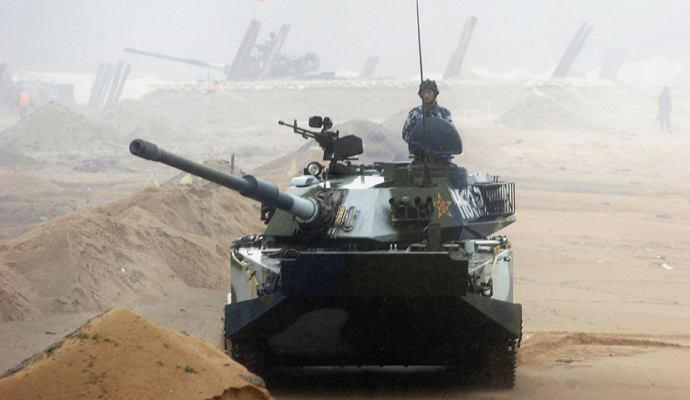
Despite a growing defense budget, China's arsenals still overflow with outdated equipment. The PLA possesses 7,580 main battle tanks — more than the U.S. Army. But only 450 of those tanks — the Type 98As and Type 99s — are anywhere near modern, with 125-millimeter guns, composite armor, modern suspension, and advanced fire control systems.
All of America's roughly 5,000 M-1 tanks are modern.
The other 7,130 Chinese tanks — some of which are pictured here — are the same descendants of Soviet T-55s that comprised Beijing's armored force in the late 1980s … and were obsolete even then.
China also has a lot of fighter planes. Between the People's Liberation Army Air Force and the air arm of the People's Liberation Army Navy, China boasts no fewer than 1,321 fighter aircraft, an aerial armada only slightly smaller than America's.
But China's air forces likewise maintain mostly obsolete jets. Of 1,321 fighters, only 502 are modern — 296 variants of the Russian Su-27 and 206 J-10s of an indigenous design. The remaining 819 fighters — mostly J-7s, J-8s and Q-5s — are 1960s designs built in the 1970s. They wouldn't last long in a shooting war.
The navy is in the best shape, but that's not saying much. The PLAN's destroyers and frigates are fairly new, but its first aircraft carrier Liaoning is a rebuilt Soviet ship from the 1980s. After a nine-year refit, Liaoning started sea trials in 2011.
Liaoning is half the size of an American Nimitz-class supercarrier and carries half as many planes. As Liaoning lacks a catapult, China's J-15 naval fighters must use a ski ramp to take off — and that limits their payload and range. Liaoning lacks the radar and refueling planes that give American flattops their long-range striking power.
Submarines are another problem area for the PLAN. Just over half of China's 54 submarines are modern — that is, built within the last 20 years. Beijing's modern undersea fleet includes the Shang, Han, Yuan, and Song classes. All four classes are Chinese-built. All are markedly inferior to Western designs.
The rest of China's submarines, especially its 1980s-vintage Mings, are totally obsolete.
The PLAN halted production of the nuclear-powered Shang class after only building just three boats — an ominous sign. Moreover, Beijing has placed an order with Russia for up to four Kalina-class subs, signalling a lack of faith in local designs.
Unknown unknowns

One of the most visible signs of China's military rise is all the new, locally-designed and -produced hardware. Beijing is building new ships, aircraft, drones and tanks that, on the outside, appear to be matches for Western weapons. But we know very little about China's homemade weaponry. Specifically, we don't know if any of it really works.
In an early effort to modernize the PLA, in the 1980s China strengthened ties with Western defense contractors. Beijing bought helicopters, aircraft, engines, naval electronics, and munitions. Then, in 1989, the Chinese government massacred pro-democracy students near Tiananmen Square in the heart of Beijing. The U.S. and Europe promptly imposed an arms embargo.
China turned to Russia, but Russia would rather sell finished products to China than help its neighbor develop its own industry. Beijing realized it would have to develop weaponry all on its own.
That's not easy. In all the world, only the United States still has the technology, expertise, and industrial capacity to develop all of its own military hardware. It's very, very expensive.
Many of China's "new" weapons are actually foreign designs that Beijing's state companies have licensed, stolen, or painstakingly reverse-engineered. The Changhe Z-8 helicopter was originally the French Super Frelon. The Harbin Z-9 scout helicopter started life as the Eurocopter Dauphin. The Type 99 tank is an updated Soviet T-72.
To be sure, not all of the PLA's new hardware is a knock-off. But "homemade" does not necessarily equal "good." In many cases, we can only guess at the weapon's quality. After all, China has no free press.
The J-20 stealth fighter prototype, for example, has flown scores of test flights since first appearing in late 2010. The large, angular plane appears to boast long range and a large payload, but its stealthiness is hard to gauge. Its avionics, aerodynamic controls, weapons, and sensors — and especially its engines — are equally questionable.
The J-20's designers appear to be waiting on new, Chinese-developed engines to replace the prototype's Russian-made AL-31Ns. China has been working on those engines, without visible success, since the early 1990s.
It's important to remember that America's latest F-35 Joint Strike Fighter first flew in 2006 and won't be ready for combat until 2016. The United States has experience developing stealth fighters; China does not. If we allow China 10 years from first flight to combat readiness, the J-20 won't be a front-line fighter until 2021. At the earliest.
The specifications of the PLAN's Type 052C/D air-defense destroyers make them seem very similar to Western warships, such as the U.K.'s Darings or the American Arleigh Burkes. But we don't know how difficult the ships were to build, how well their air-defense system works with the associated phased-array radar or how accurate and reliable the ships' missiles are.
When it comes to developing arms, China is starting out far behind Russia and the West and is struggling to catch up. And we must not forget that the very government developing all this hardware is also the only source of information about the new gear. For now, it's wise to be skeptical of Chinese weaponry.
Neighborhood watch

China's aggressive behavior, in the East and South China Seas has prompted many of its neighbors to band together or seek the support of larger, more powerful allies. Japan is the hub for many of these of these cooperative agreements.
Politically and constitutionally limited in what kind of direct action it can take to counter China, Japan is building relationships with China's other disgruntled neighbors and with Western powers. Tokyo is currently in talks with Australia, the U.K., India, Indonesia, The Philippines, Vietnam, Canada, and the U.S.
Logistics cooperation, co-development of military equipment, intelligence sharing, joint exercises, and security-related aid are all on the table.
Vietnam, a historical enemy of China, has begun building a military specifically tailored to counter the PLA. It has procured Russian Su-27 and Su-30 fighters and four Gepard frigates. Vietnam has even bought its first submarines — six Improved Kilo diesel-electrics from Russia that are more advanced than the Chinese navy's own Kilos.
Hanoi is strengthening foreign ties. India will train Vietnam's submariners. Vietnam has also hinted at letting foreign fleets use the harbor at Cam Ranh Bay, but is likely holding back as that would be a serious provocation to China.
The Philippines, locked in a standoff with China over the Ayungin Shoal, has begun rebuilding its navy and air force, purchasing retired U.S. Coast Guard cutters for its navy and a dozen South Korean TA-50 light fighters for the air force. Manila has agreed to host American facilities — and American troops — on its military bases.
Asia probably won't assemble a new NATO-like alliance in the near future. China's opponents aren't willing to accept such close military integration. Most are unwilling to fight for someone else. Many of these countries, despite being wary of Chinese aggression, still have strong economic ties to Beijing.
Still, the level of cooperation would complicate any military moves by China. Not that Beijing necessarily intends to invade … anyone. Ever. Military, diplomatic and economic power are intertwined forces that enable a government to shape its environment — peacefully and against a rival's will.
The big question is, when does China catch up to America militarily?
Never.
"China will grow old before it gets rich" is, by now, a cliche among China-watchers. But it's true. The same demographic wave that has gifted China with an abundance of labor will soon also transform the country into the world's biggest retirement home.
Beijing's "one-child" policy has sharpened the trend. Today China has 16 retirees per 100 workers. Projections see that increasing to 64 retirees per 100 workers by 2050, resulting a much grayer population than in America.
This has indirect — but serious — implications for China's defense. Most Chinese do not have retirement benefits and in their old age must rely on personal savings or family … a difficult proposition when there is only one child to take care of two parents.
If Beijing wants to preserve household savings and productivity, it will have to build some kind of social welfare system. And that means making some difficult choices.
China's borders are secure. The U.S., Japan, and India cannot bring down the Chinese government. But tens of millions of desperate Chinese families could do so — and just might, if Beijing can't find some way to care for them as they age.
China has nuclear weapons. It's ruled by a deeply nationalistic, authoritarian regime with a history of brutality towards its own citizens. It has territorial claims that clash with those of other countries — and a defense budget rising by 8 percent annually. It's wise to keep a watchful eye on China.
Yet China is a hobbled giant with many deep, systemic problems. Some of these problems — particularly the technological ones — are solvable. The demographic issue is not. And it's the biggest reason the paper dragon does not pose a major threat to the rest of the world over the long term.
From drones to AKs, high technology to low politics, War is Boring explores how and why we fight above, on, and below an angry world. Sign up for its daily email update here or subscribe to its RSS Feed here.
More from War is Boring...
-
 ‘This is a structural weakening of elder protections’
‘This is a structural weakening of elder protections’Instant Opinion Opinion, comment and editorials of the day
-
 4 tips to safeguard your accounts against data breaches
4 tips to safeguard your accounts against data breachesThe Explainer Even once you have been victimized, there are steps you can take to minimize the damage
-
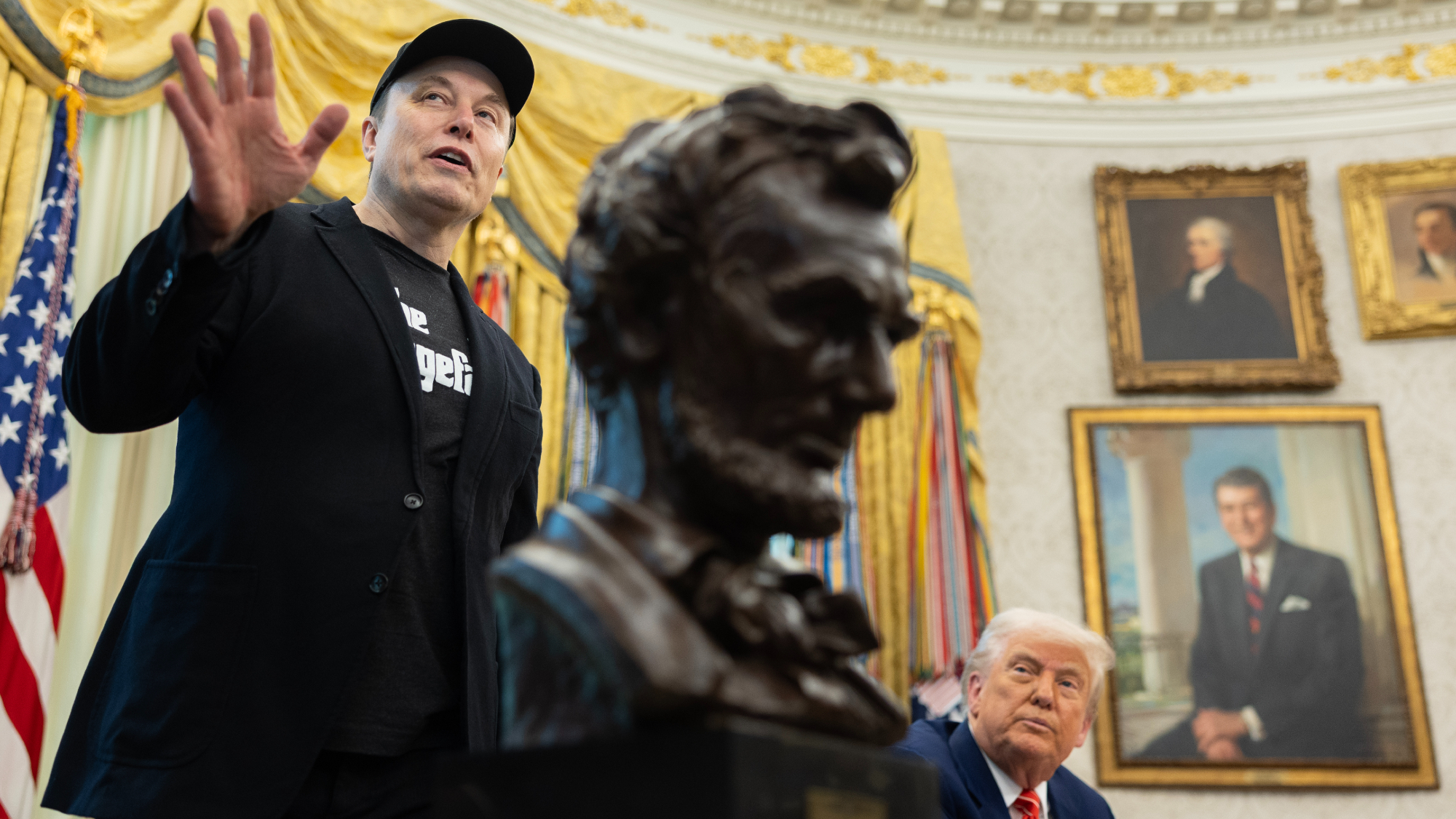 The Week's year-end quiz
The Week's year-end quizPuzzles and quizzes Test how well you followed the news with our year-end quiz